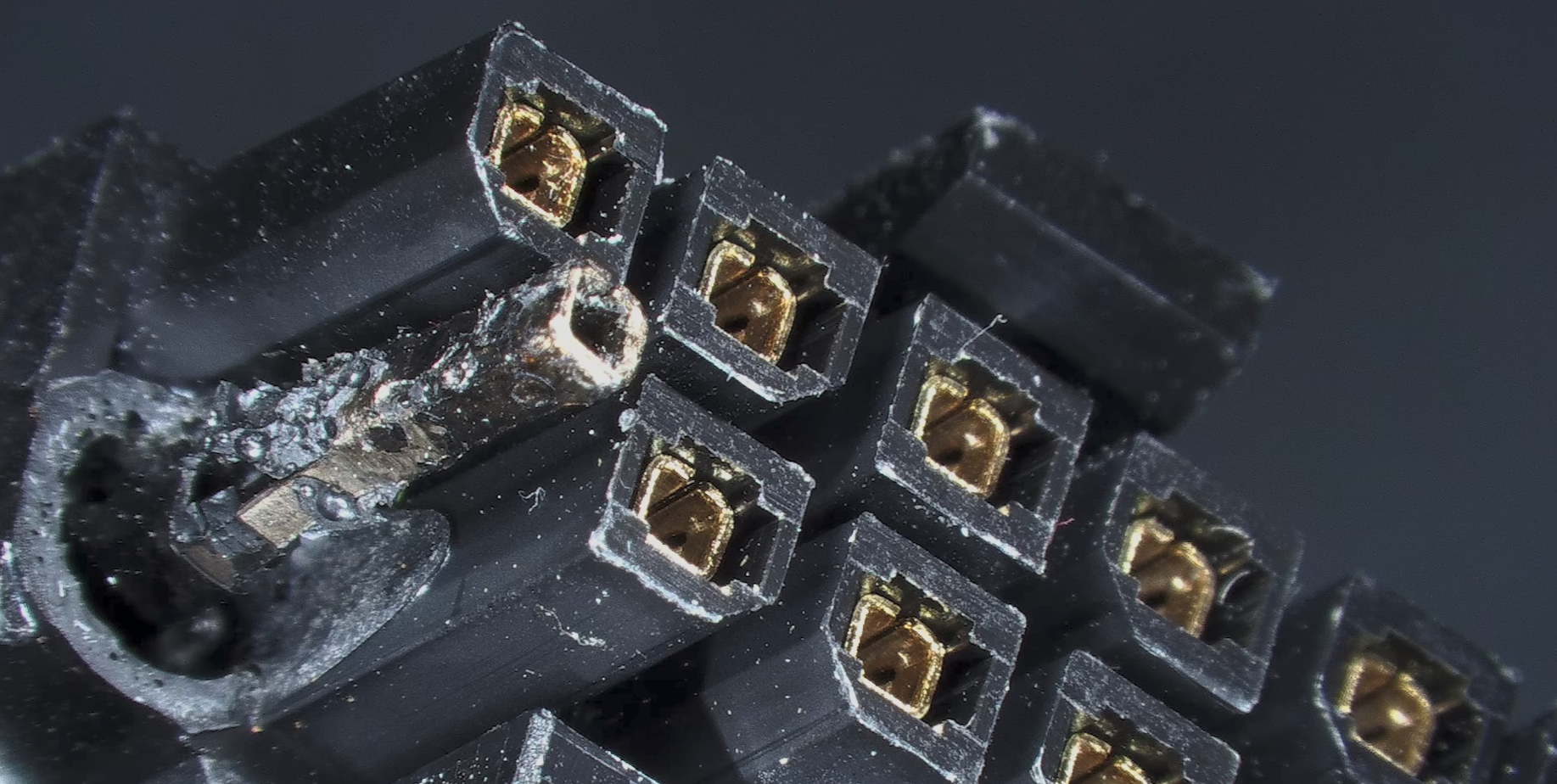
Following an RTX 5090 melting incident just a few days ago, YouTuber Der8auer AKA Roman Hartung contacted the affected party and managed to acquire the damaged graphics card, power cable, and even the PSU for investigation. While the user was absolutely sure there was no user error involved, many blamed using a custom cable from MODDIY instead of official Nvidia adapters for the plastic-melting failures.
On further analysis, Der8auer revealed a critically damaged wire, noting that its condition was far worse than the others. Roman put his own RTX 5090 FE to the test, only to find out that of the six 12V cables, one drew over 22A of current, breaching safety limits with temperatures north of 150 degrees Celsius.
Back when the news broke, the Reddit OP revealed that they were using a third-party 16-pin cable from MODDIY instead of the official one included in the GPU box. This obviously led to some backlash, with many blaming the quote-unquote inferior quality of the cables as the root cause of the damage. Der8auer believes the criticism is unjustified, citing his positive experiences with the cable company and its repute in the DIY community.
In any case, the damage had already been done and now was time to investigate the crime scene. Roman captured high-quality microscopic shots (some attached below) of both ends of the melted cable, the GPU's connector, and even the damaged PSU. While horrifying, the damage is pretty standard considering this is not the first case we're seeing. As noted above, significant damage to one particular wire prompted further investigation. Roman paired his latest custom water block equipped RTX 5090 FE, connected to Corsair's AX1600i PSU, making sure to double-check that the GPU connector is seated properly. The GPU was put through its paces in FurMark, where it was seen drawing around 570W of power.
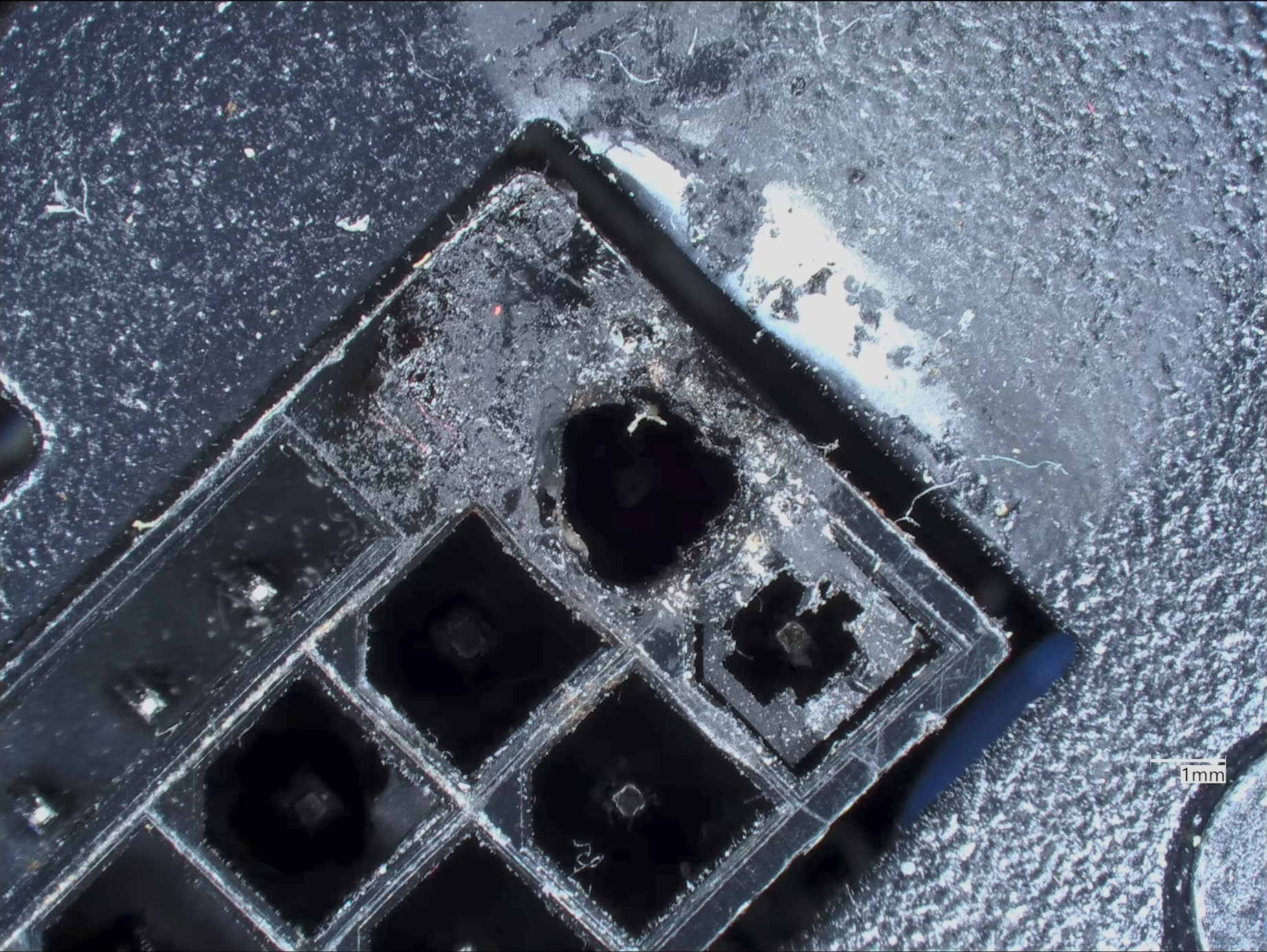
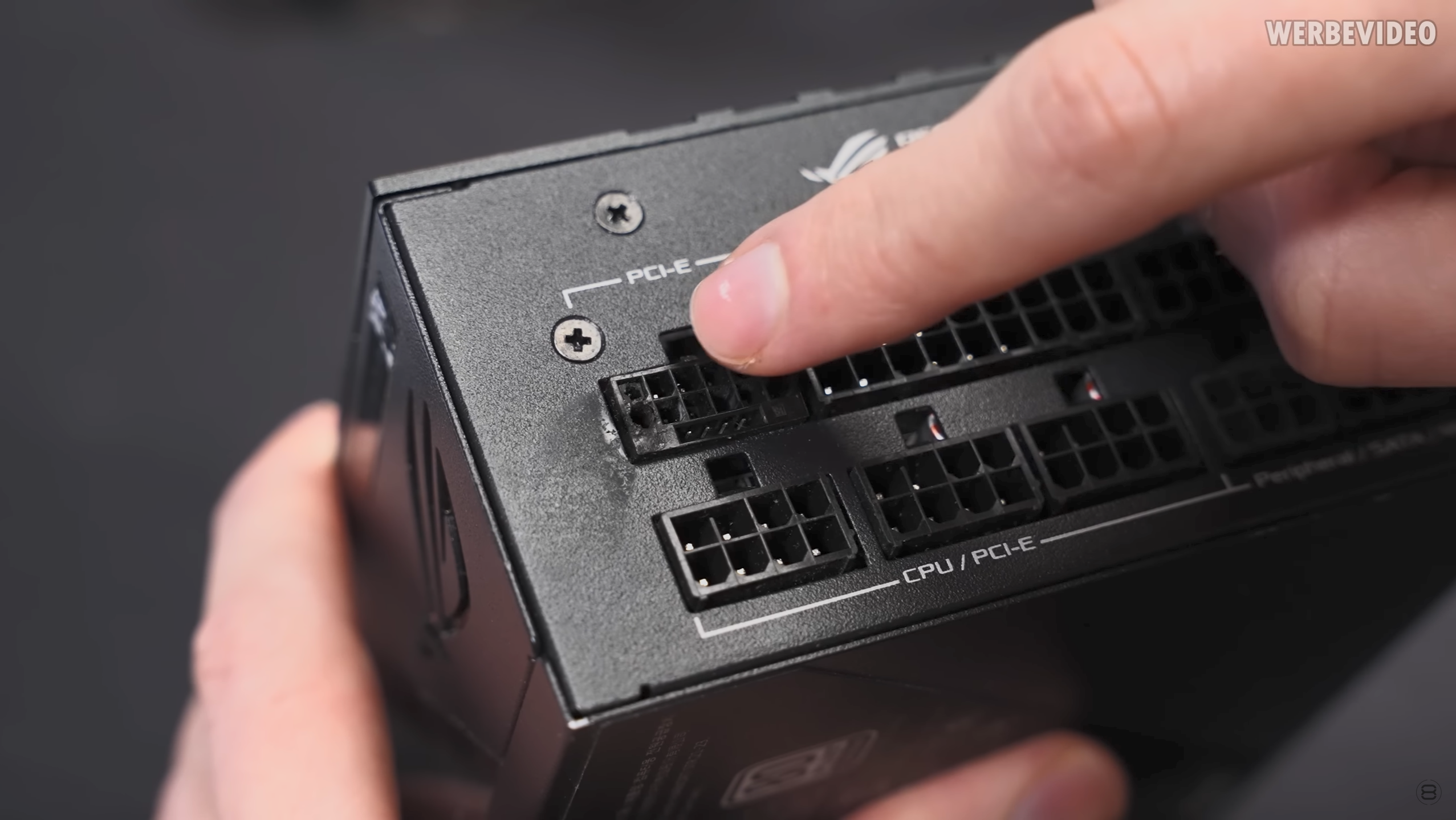
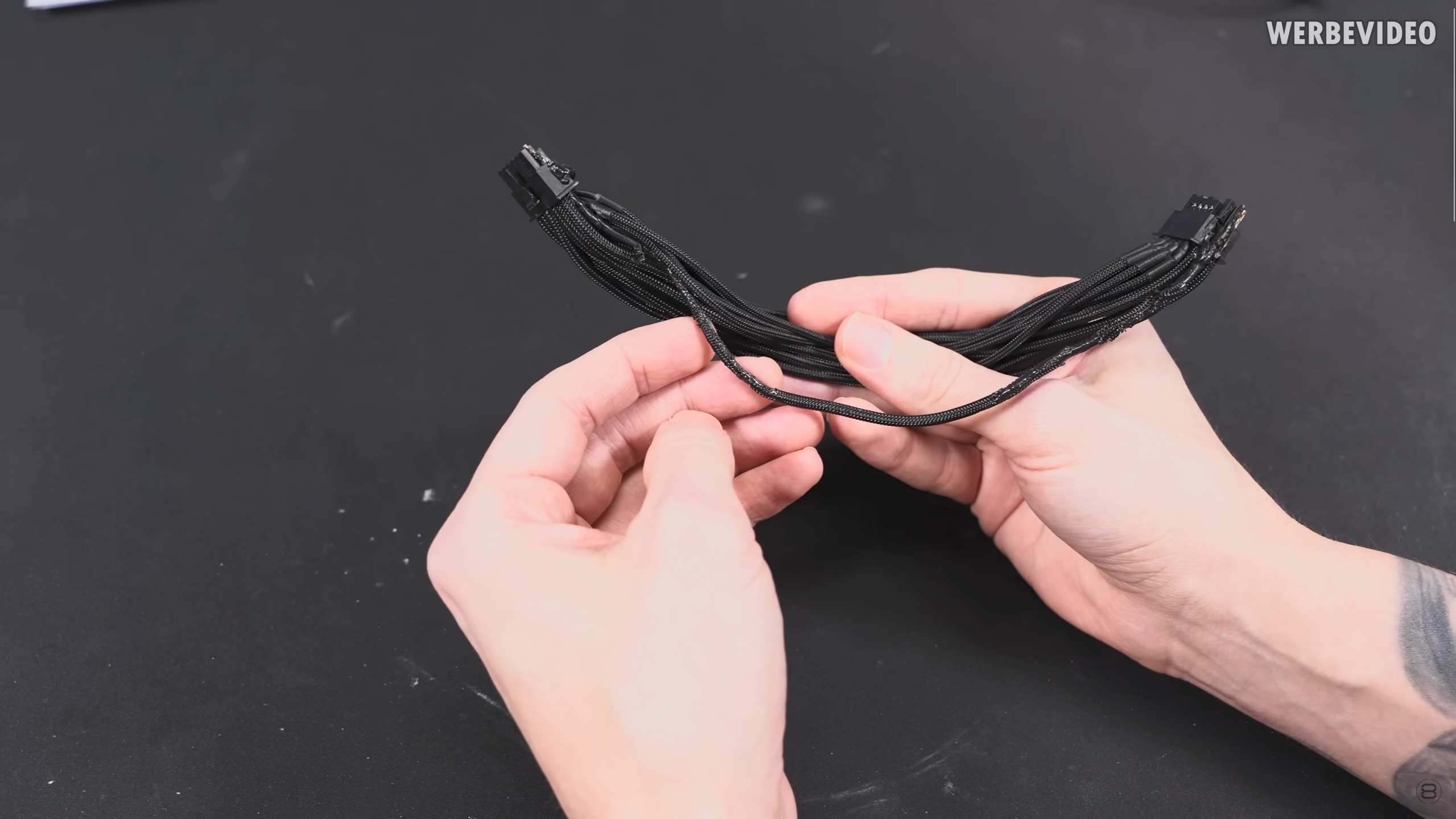
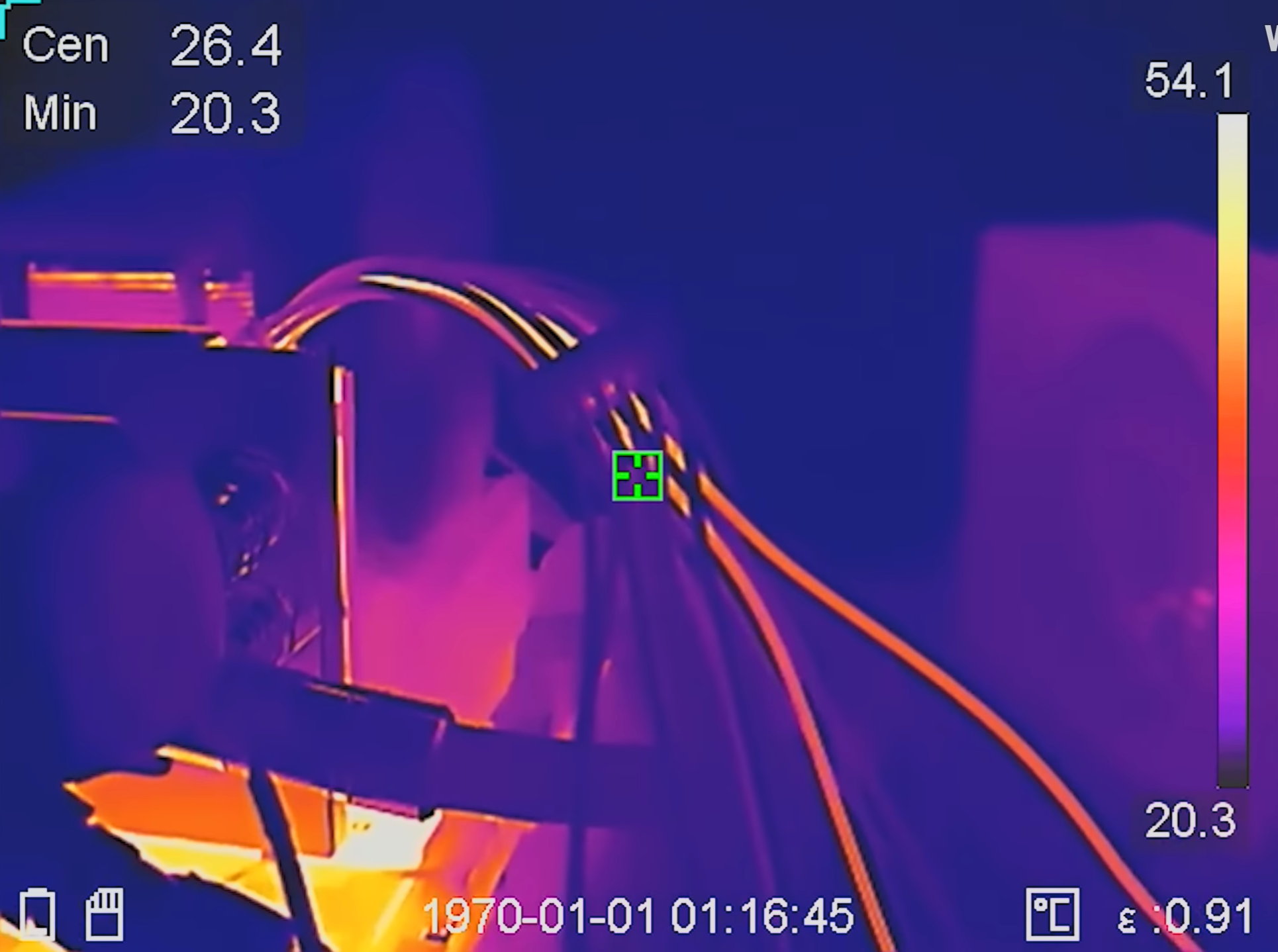
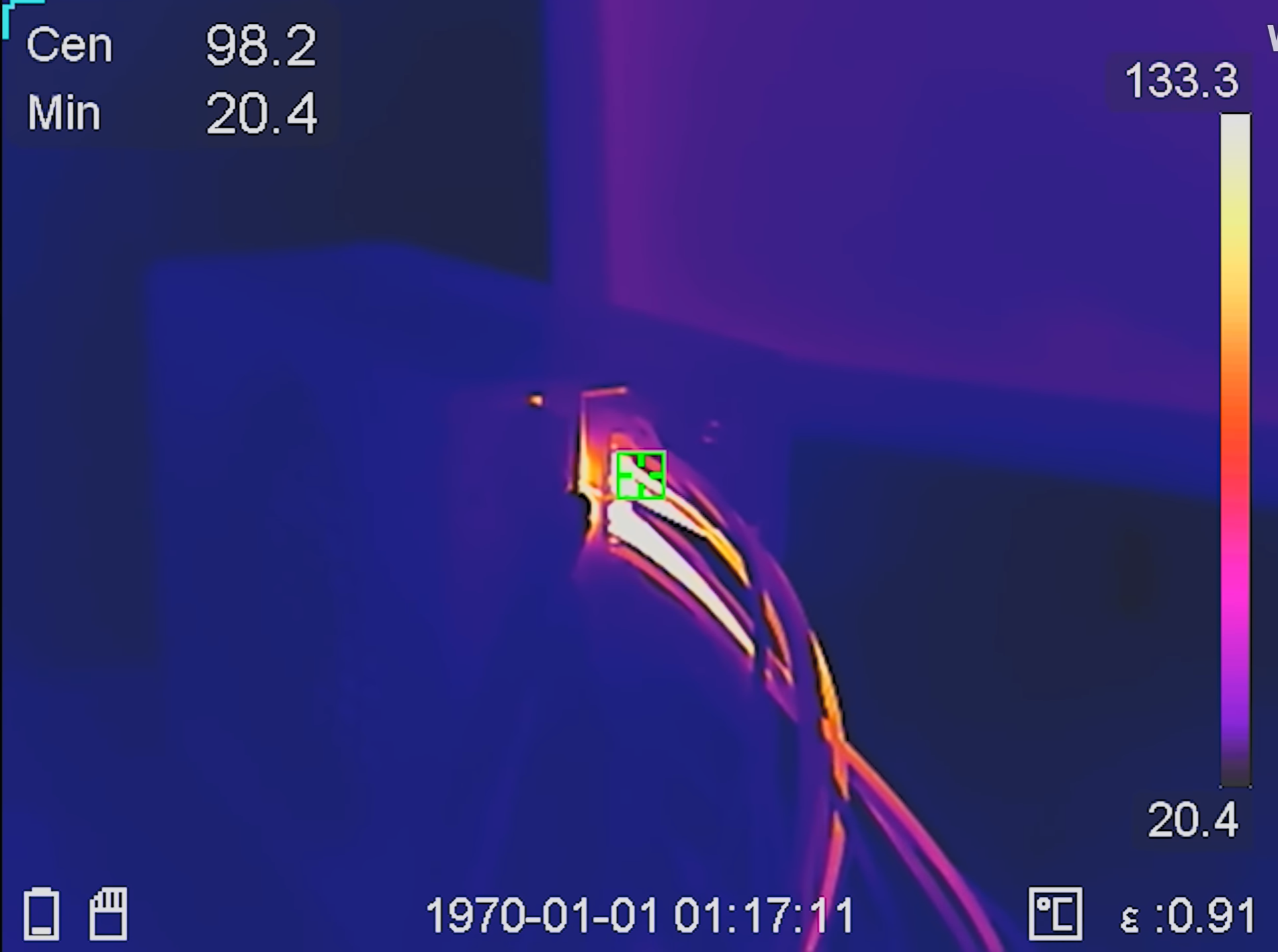

Just 45 seconds into the test, two of the six 12V wires shot up to nearly 60 degrees Celsius. On the PSU end, Roman witnessed a hotspot of almost 130 degrees Celsius, spiking to over 150 degrees Celsius after just four minutes. With the help of a current clamp, one 12V wire was carrying over 22 Amperes of current, equivalent to 264W of power. For context, the 12VHPWR and 12V-2x6 standard allows for a maximum of 9.5 Amperes through a single pin. The reported current readings for the remaining five wires were: 2A (24W), 5A (60W), 11A (132W), 8A (96W), and 3A (36W) with a moderate margin of error as it's hard to get precise measurements across all wires concurrently.
In short, uneven current distribution leads to dangerously high temperatures which can potentially burn or melt the cable and damage connected components. In isolation, this incident could've been swept under the rug as a one-off, however, Roman's near one-to-one recreation of the problem suggests there's something else at play here.







